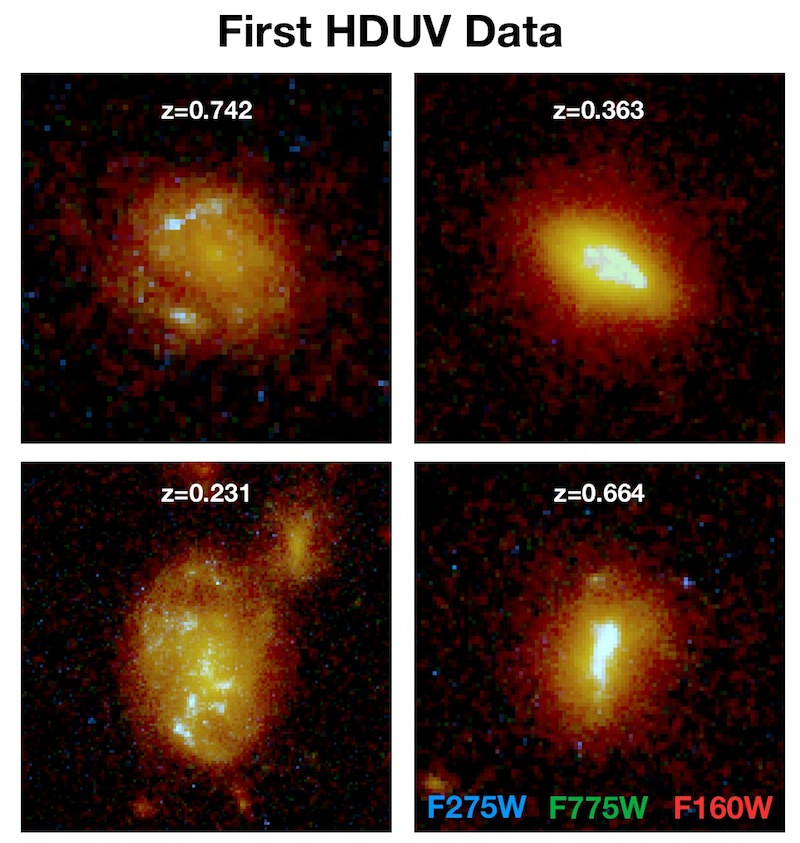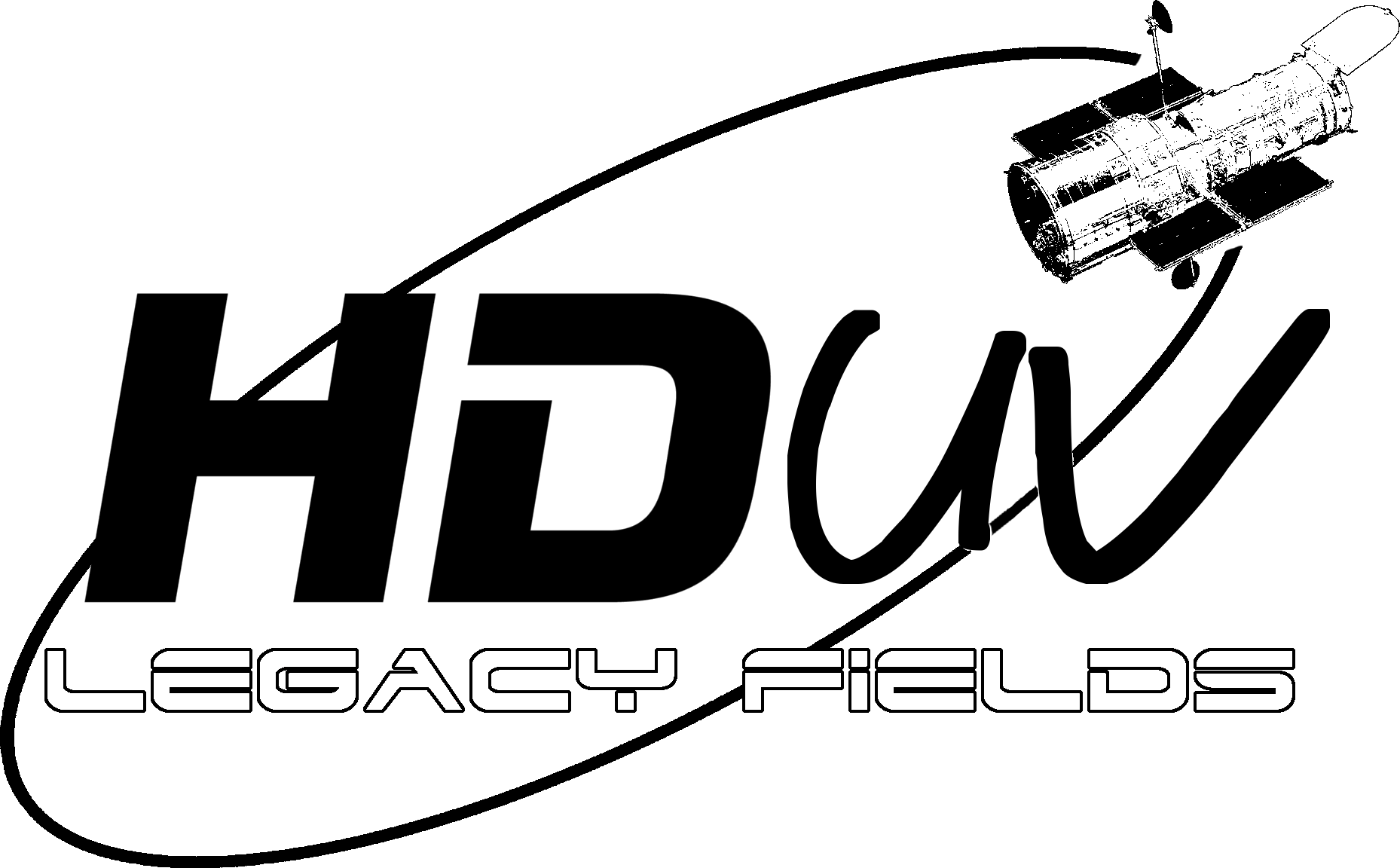Welcome to the HDUV: the Hubble Deep UV Legacy Survey
The HDUV is a legacy program using the Hubble Space Telescope to obtain deep UV images of the central parts of the two GOODS fields, which was approved in HST Cycle 22. It builds on existing WFC3/UVIS data to obtain deep images at 250-350 nm (in F275W and F336W). These unique UV imaging data provide a complete census of low-luminosity star-forming galaxies at z~0.5-2 and enable a wealth of research by the community. This includes measuring the physical properties of sub-L* galaxies, and characterizing resolved stellar populations to decipher the build-up of the Hubble sequence from sub-galactic clumps.
To ensure these legacy data are fully exploited, high-level science data products are released to the community. They are available at the Mikulski Archive for Space Telescopes (MAST) at archive.stsci.edu/prepds/hduv/. The public release to MAST supersedes the earlier v0.5 release that was available at this webpage.
To immediately get to the science-ready data, including images and catalogs, click here: HLSP Data V1
For information on the survey, check out the Survey page here, as well as the survey overview paper: Oesch et al. (2018), ApJS
The first exposures for our program were taken on Nov 25, 2014, revealing star-forming regions in intermediate redshift galaxies. A few examples are shown below.

